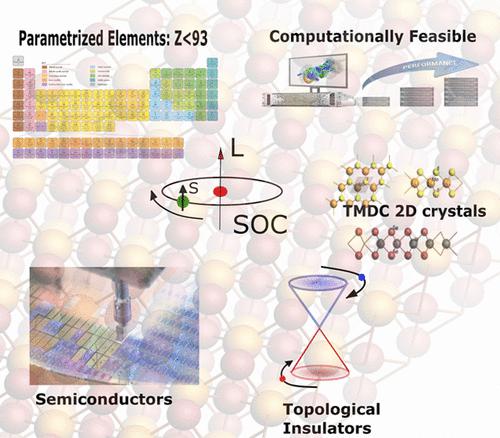当前位置:
X-MOL 学术
›
J. Chem. Theory Comput.
›
论文详情
Our official English website, www.x-mol.net, welcomes your
feedback! (Note: you will need to create a separate account there.)
DFTB Parameters for the Periodic Table: Part III, Spin-Orbit Coupling
Journal of Chemical Theory and Computation ( IF 5.7 ) Pub Date : 2022-06-23 , DOI: 10.1021/acs.jctc.2c00376 Gautam Jha 1, 2 , Thomas Heine 1, 2, 3
Journal of Chemical Theory and Computation ( IF 5.7 ) Pub Date : 2022-06-23 , DOI: 10.1021/acs.jctc.2c00376 Gautam Jha 1, 2 , Thomas Heine 1, 2, 3
Affiliation

|
Spin-orbit coupling (SOC) is crucially important for the correct description of the electronic structure and transport properties of inorganic semiconductors, and for assessing topological properties as in topological insulators. We present a consistent set of SOC parameters for the density-functional based tight-binding (DFTB) method covering the elements throughout the periodic table. The parameters are based on atomic SOC data calculated at the level of density-functional theory (DFT). We tested these parameters for representative systems with significant SOC, including transition metal dichalcogenide two-dimensional crystals, III-V bulk semiconductors, and topological insulators. Our parameterization opens the door for DFTB-based electronic structure and transport calculations of very large systems, such as twisted van der Waals heterostructures.
中文翻译:

元素周期表的 DFTB 参数:第三部分,自旋轨道耦合
自旋轨道耦合 (SOC) 对于正确描述无机半导体的电子结构和传输特性以及评估拓扑绝缘体中的拓扑特性至关重要。我们为基于密度泛函的紧束缚 (DFTB) 方法提供了一组一致的 SOC 参数,涵盖了整个元素周期表中的元素。这些参数基于在密度泛函理论 (DFT) 级别计算的原子 SOC 数据。我们测试了具有显着 SOC 的代表性系统的这些参数,包括过渡金属二硫属化物二维晶体、III-V 体半导体和拓扑绝缘体。我们的参数化为超大型系统的基于 DFTB 的电子结构和传输计算打开了大门,
更新日期:2022-06-23
中文翻译:

元素周期表的 DFTB 参数:第三部分,自旋轨道耦合
自旋轨道耦合 (SOC) 对于正确描述无机半导体的电子结构和传输特性以及评估拓扑绝缘体中的拓扑特性至关重要。我们为基于密度泛函的紧束缚 (DFTB) 方法提供了一组一致的 SOC 参数,涵盖了整个元素周期表中的元素。这些参数基于在密度泛函理论 (DFT) 级别计算的原子 SOC 数据。我们测试了具有显着 SOC 的代表性系统的这些参数,包括过渡金属二硫属化物二维晶体、III-V 体半导体和拓扑绝缘体。我们的参数化为超大型系统的基于 DFTB 的电子结构和传输计算打开了大门,











































 京公网安备 11010802027423号
京公网安备 11010802027423号